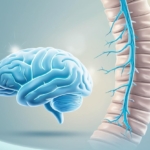Introduction: When Sweat Becomes Therapy
Anxiety had me frozen. I was skipping meals, sleeping at odd hours, and my mind wouldn’t stop racing. Then someone said, “Just go for a walk.” That walk turned into a jog. That jog turned into the first moment in weeks I felt like me again.
You’ve probably heard that exercise is good for your body. But did you know it can be a powerful medicine for your mind? Let’s explore how movement—any kind—can profoundly improve your mental well-being.
1. The Science-Backed Link Between Exercise and Mental Health

Numerous studies prove it: physical activity reduces symptoms of depression, anxiety, and even ADHD. Here’s why:
- Endorphins & Serotonin: Exercise triggers the release of feel-good chemicals that literally lift your mood.
- Improved Brain Function: Regular workouts increase neuroplasticity—your brain’s ability to adapt, focus, and learn.
- Lower Cortisol: Physical activity helps reduce the stress hormone cortisol, leaving you calmer and more relaxed.
- Boosted Sleep Quality: Better sleep equals a clearer, more stable mind—and exercise improves sleep.
🧠 Did You Know? A brisk 30-minute walk just 3 times a week has been shown to reduce depression symptoms by 47%.
2. Exercise Helps You Take Control

One reason mental illness can feel overwhelming is the lack of control. Exercise gives that power back.
- It’s Your Time: A 20-minute home workout is an act of self-respect. You’re saying, “I matter.”
- Structure Helps: Having a fitness routine gives your day structure and purpose.
- Visible Progress: Seeing your body get stronger builds confidence—confidence that spills into other areas of life.
3. Not All Workouts Are Equal—But All Help
You don’t need to become a gym rat. The best exercise is the one you enjoy and stick to.
💃 Best Types of Exercise for Mental Health:
- Walking: Especially in nature—proven to reduce stress and rumination.
- Yoga: Combines movement and breathwork to calm the nervous system.
- Strength Training: Boosts self-esteem and reduces anxiety.
- Dancing: Releases tension, encourages self-expression, and triggers dopamine.
The key? Consistency over intensity.
4. Movement for Specific Mental Health Challenges

Let’s get specific. Here’s how different forms of exercise benefit various conditions:
| Condition | Helpful Exercise |
|---|---|
| Depression | Aerobic cardio, yoga |
| Anxiety | Strength training, mindful movement |
| ADHD | Martial arts, circuit training |
| PTSD | Yoga, tai chi, walking in nature |
| Burnout | Low-intensity walking, stretching |
Always consult a doctor if you’re managing a diagnosed condition—but know this: exercise is often recommended alongside therapy, not instead of it.
5. How to Get Started (Even If You’re Not Motivated)

Struggling to begin? That’s okay. Start tiny.
✅ 5-minute stretch in the morning
✅ Walk while listening to your favorite music or podcast
✅ Join a free online fitness class
✅ Turn house cleaning into a dance session
✅ Keep a “mood + movement” journal to track your emotions after workouts
🔑 Tip: Motivation often comes after action—not before.
6. Real Stories, Real Impact
🎙️ “I was going through a rough patch—therapy helped, but it was when I started running that I finally felt free. It’s like I run out the stress.” – Maya, 32
🎙️ “Strength training helped me stop focusing on what my body looked like and start loving what it could do. That changed everything for me mentally.” – Jordan, 40
7. Final Thoughts: Heal Your Mind, One Step at a Time

Mental health isn’t just in your head. It’s in your body. It’s in the rhythm of your breath, the stretch of your limbs, the sweat on your brow. Exercise isn’t a chore—it’s a tool. A quiet revolution that happens one rep, one lap, one walk at a time.
No matter where you’re starting, just know: movement is medicine. And your healing can start today—with just one small move.
💬 We’d Love to Hear From You!
How has exercise helped your mental health journey? Share your story in the comments or tag us on instagram @fittrru — let’s inspire each other.






